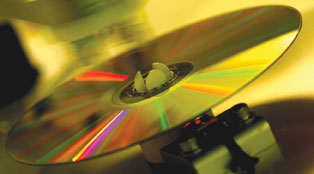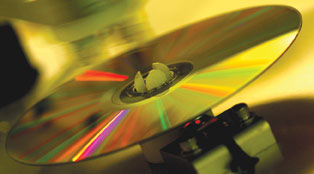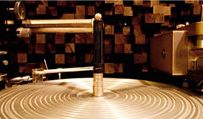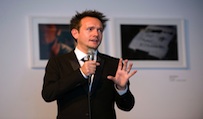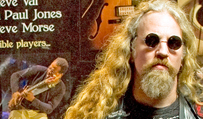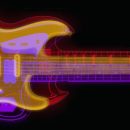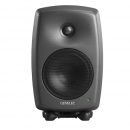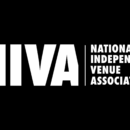I’ve been teaching a one day workshop entitled “How To Make Your Own CD (and not go broke!)” for a few years now. Most of the singers who attended have gotten a lot out of them, but a little confession—I hadn’t truly walked the talk. Yes, dear friends, I was like a Jenny Craig weight consultant sneaking cookies in the bathroom. My last few CDs, while pretty streamlined and glitch free, were still “cash gobblers”; i.e. when I wanted the most expensive mastering room for my CD I plunged in and did it, even when my engineer wouldn’t negotiate down his price in an economic downturn.
But this year, the money in my bank account told me unless something drastically changed, no CD. At first, I thought I’d put off making the new album until 2012. But the last CD I made, Till I Get It Right, really started a nice little momentum for me and I didn’t want to waste it—and then I had an “AHA! Moment.” I should use this opportunity to practice all the stuff I preach in my workshop! And guess what?—it did work! Want to know how? Check out the six tips below:
By Mark Winkler
• Define yourself as an artist. If you can’t do this, don’t go any further. In the old days, recording companies would find you; hook you up with the head of their A&R Dept. and spend big bucks on straightening your teeth, getting the “right” composers and arrangers to work with you, and teaching you not to make faces on camera. Well, in today’s brave new world, you have to be your own A&R Dept. To proceed you have to answer the following questions: What’s my genre? What are my strengths? What are my weaknesses? What two artists could I be compared to? If you’re having trouble doing this (or even if you can), it’s a wise idea to hire professionals in your field to come to your shows, listen to your demos and give you a perspective on your “performer identity.” There are plenty of journalists, producers or engineers who will do this for between $50-100 an hour. It’s money well spent.
• Why are you making the CD? If your answer is “to sell them”—wake up and smell the coffee. In this “social networking, file sharing” age we live in a CD is just one tool to help you get your message out. For most musicians today, playing live to bigger and bigger paying audiences is the goal. In my case, as a jazz performer, my goal isn’t so much to sell CDs as to raise my profile in the jazz community, with critics as well as with fans, in the hopes of landing more gigs at prestigious festivals all over the world. Nowadays, a CD is just an expensive calling card. It’s important to keep your goal in mind so that you can say “NO!” to the expenses that don’t make sense. E.g.: I eschewed strings for a pretty ballad on my new CD Sweet Spot, and put that money into having one of the greatest sax players, Bob Sheppard, play on it. The jazz community puts a lot more store in great musicianship than in string sections, and that’s my market.
• Remember, the CD is the end of the journey, not the beginning. Many singers have the mistaken notion that they can just rent a studio and record a bunch of their favorite songs “just like that.” Not a good idea… because there is a whole lot of planning and strategizing to do first. The right place to start is in live performance. For two reasons: to succeed in today’s world of entertainment it is paramount to be a great performer; and performing live often and consistently will give you the chops you need to wow a crowd. And only through performing will you learn which songs are working for you. You need to have 10 to 20 songs that are consistent audience pleasers––numbers that always work––before you can enter a studio. The best way to learn is to do a video or audio tape of every performance, then play it back at your leisure and watch or listen to the audience response. I do it all the time; I even measure the length of audience applause after each number; and, though it may sound icky, it works.
• Only do 10 songs. Okay, I did 11… but I cheated a little because I took a track I had recorded for a previous recording but didn’t use, and put a new vocal on it. That was the benefit of having some unused material around. But just because it is possible to put 80 minutes on a CD doesn’t mean you should do it. Bear in mind that every song will add between $1,000-$3,000 to the budget!
• Wheel and deal. The economy, in case you haven’t noticed, is in bad shape. People need work…a bad thing for mankind but a good thing for “musiciankind.” On this CD, I had arrangements done for a lot less than the going rate from an incredible arranger by giving him a batch of four songs instead of just one. I asked for a “group discount,” and as a result I paid $500 instead of $750 with no loss of quality. To save money on production costs, you have to do some homework, learn the fair market price of the services you need and then ask for a break on the price.
• Go the extra mile. Do not skimp when mastering and duplicating your CD. Mastering is the last step in the recording process, where the final polish is put on your recordings. Be aware that if you master at “off times,” when the mastering company is not busy, you can save some bucks. Later, when you need your CD duplicated, shop wisely. Numerous CD duplicators advertise in Music Connection, offering special deals. Ask your friends who they recommend. Because of the shakey economy all duplicators are competitive, so recommendations matter. And one final note: give the CD duplicators a pristine master that needs no further work. Listen to it to make absolutely sure. You do not want any budget setbacks at this point.
In the end, I made Sweet Spot for about HALF the cost of my last two CDs (and that was after the cost of an ill-fated horn section was factored in). Now, in the early stages of release, All Music Guide has given it four stars, and Jazz Times is doing a feature length article on me. There was no quality loss suffered to the project and I was able to complete it in time for release this year. And I can honestly say, “I walked the talk, and here’s the proof!”
miniBIO: Mark Winkler is a jazz singer-songwriter whose new CD Sweet Spot has just been released. It is the follow-up to Till I Get It Right, which was voted one of the Top 10 Jazz vocal CDs of 2009 by Jazz Times. As a songwriter he’s had over 200 of his songs recorded by such artists as Dianne Reeves, Randy Crawford and Liza Minnelli. Winkler teaches lyric writing at UCLA Extension and privately, and he also does a workshop entitled How To Make Your Own CD (and not go broke). To find out more or to contact him, go to markwinklermusic.com.

